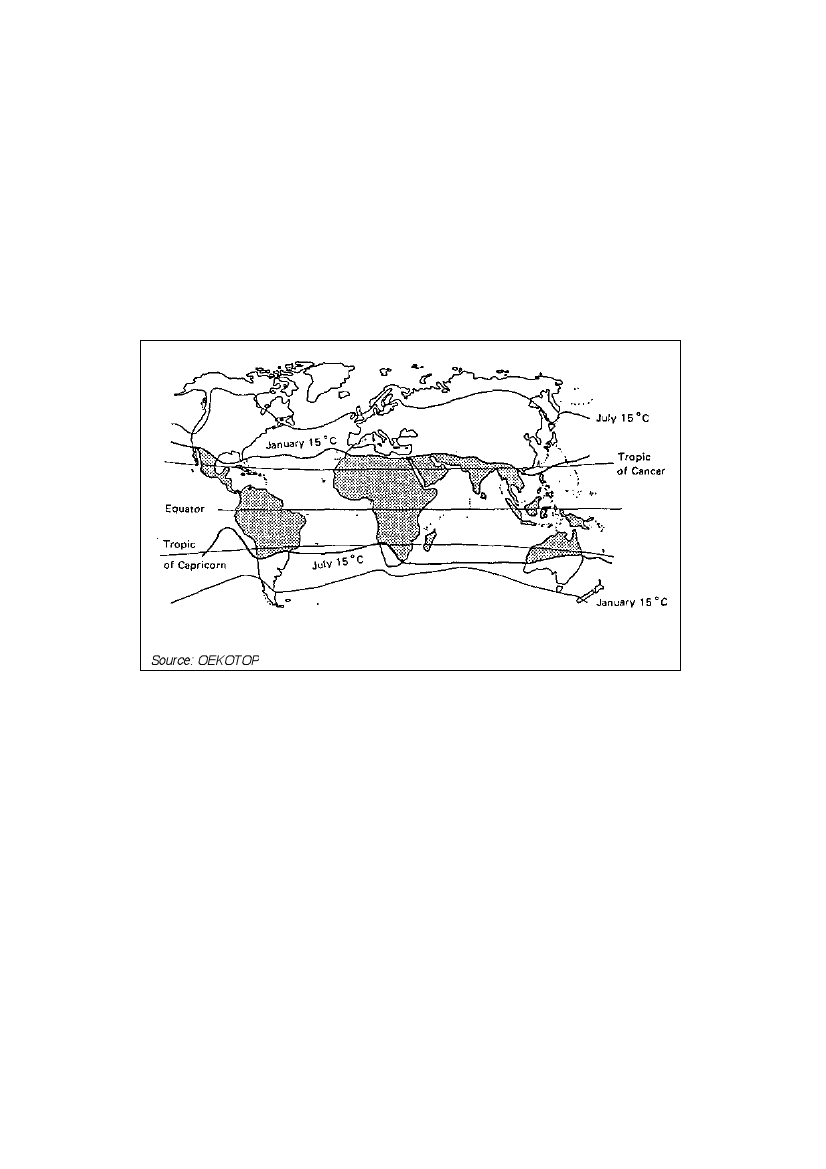
Environmental Frame Conditions of Biogas Technology
Climatic conditions for biogas dissemination
Temperatures
Biogas technology is feasible in principle under almost all climatic conditions. As a rule,
however, it can be stated that costs increase for biogas production with sinking
temperatures. Either a heating system has to be installed, or a larger digester has to be built
to increase the retention time. Unheated and un-insulated plants do not work satisfactory
when the mean temperature is below 15 °C. Heating systems and insulation can provide
optimal digestion temperatures even in cold climates and during winter, but the investment
costs and the gas consumption for heating may render the biogas system not viable
economically.
Figure 18: Global 15oC isotherms for January and July, indicating the biogas-
conducive temperature zone
Source: OEKOTOP
Not only the mean temperature is important, also temperature changes affect the
performance of a biogas plant adversely. This refers to day/night changes and seasonal
variations. For household plants in rural areas, the planner should ensure that the gas
production is sufficient even during the most unfavorable season of the year. Within limits,
low temperatures can be compensated with a longer retention time, i.e. a larger digester.
Changes of temperature during the course of the day are rarely a problem as most simple
biogas digesters are built underground.
Precipitation
The amount of seasonal and annual rainfall has mainly an indirect impact on anaerobic
fermentation:
• Low rainfall or seasonal water scarcity may lead to insufficient mixture of the
substrate with water. The negative flow characteristics of substrate can hamper
digestion.
• Low precipitation generally leads to less intensive systems of animal husbandry. Less
dung is available in central locations.
• High precipitation can lead to high groundwater levels, causing problems in
construction and operation of biogas plants.
43